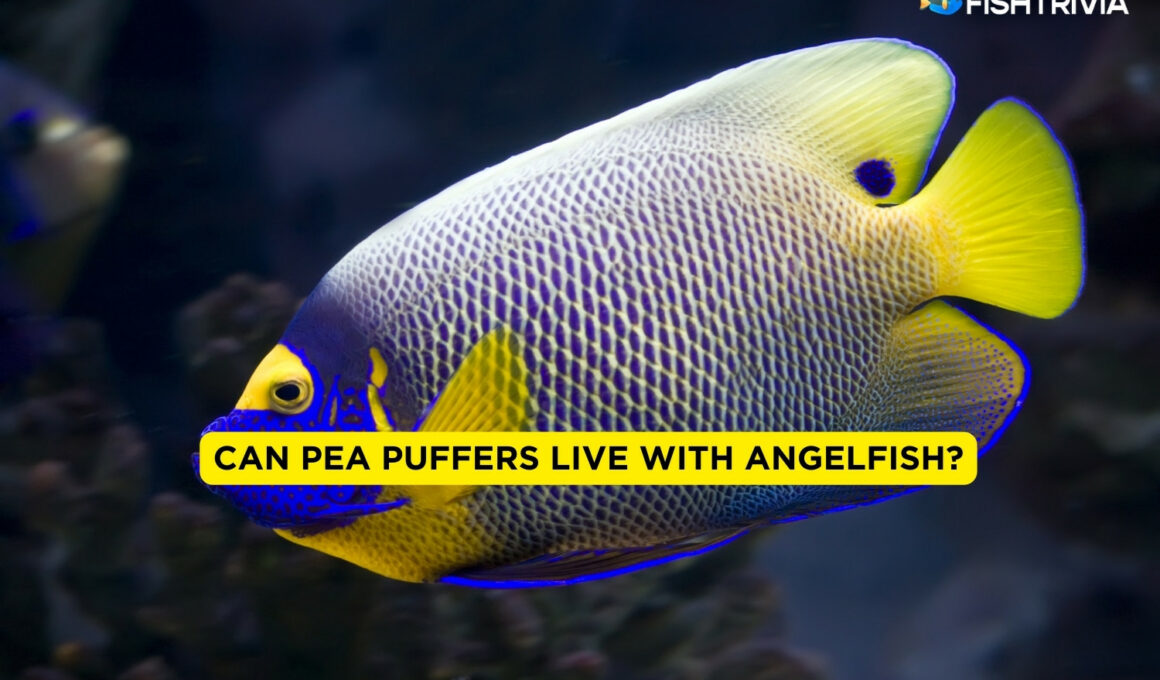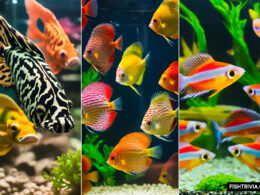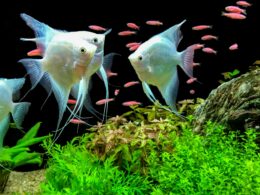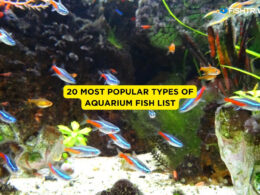In this article Show
Are you considering adding both pea puffers and angelfish to your home aquarium? This topic often sparks curiosity among aquarists, but it’s crucial to make informed decisions based on a thorough understanding of each species.
As an experienced fish keeper, I’ve learned that compatibility is key to a thriving aquarium community. In this article, we’ll explore the compatibility of pea puffers and angelfish.
We’ll look closely at each fish’s needs, behaviors, and the dynamics of mixing them in a shared environment. So, let’s get right to it and explore the world of pea puffers and angelfish, ensuring your aquarium is not just a collection of fish, but a harmonious and healthy ecosystem.
Can Pea Puffers Live With Angelfish?
Yes, pea puffers and angelfish typically require different living conditions and may not coexist well together in a home aquarium. Pea puffers, known for their unique personalities and specific care requirements, often display territorial behavior. Angelfish, on the other hand, are larger and can become aggressive, especially in confined spaces.
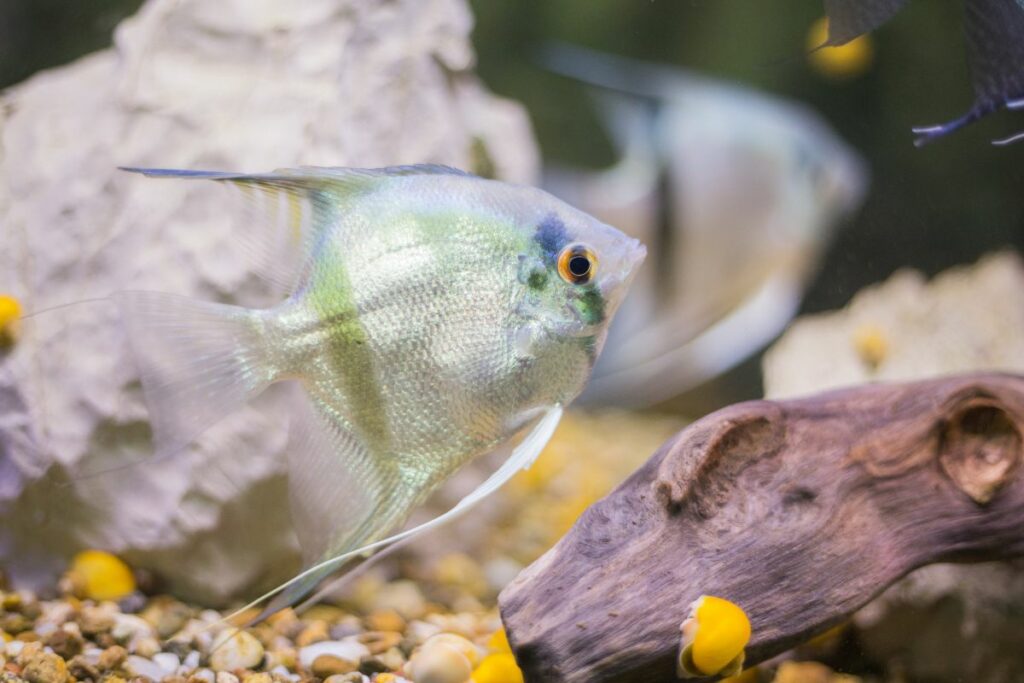
Aquarium Conditions and Compatibility
Creating the right aquarium conditions is vital for the health and compatibility of both pea puffers and angelfish. Understanding and meeting their specific needs is key to maintaining a peaceful and thriving aquatic environment.
Ideal Aquarium Conditions for Both Species
Pea Puffers
- Tank Size: A minimum of 5 gallons for a single pea puffer, with an additional 3-5 gallons per additional fish.
- Water Parameters: Prefer slightly acidic to neutral pH (around 6.5-7.5), with a temperature range of 77-79°F (25-26°C). They require soft to moderately hard water.
- Environment: Dense vegetation and plenty of hiding spots are crucial, as they mimic their natural habitat and provide a sense of security.
Angelfish
- Tank Size: Require larger tanks, starting at 20 gallons for a pair. Larger spaces reduce stress and territorial behavior.
- Water Parameters: Prefer a pH range of 6.5-7.5 and warmer water temperatures between 76-82°F (24-28°C). They thrive in soft to moderately hard water.
- Environment: Angelfish appreciate vertical space due to their tall body shape. Plants, driftwood, and other decorations that offer hiding spots are beneficial.
How Aquarium Conditions Affect Fish Behavior and Compatibility
- Space: Limited space can increase stress and aggression, particularly in territorial species like pea puffers. Adequate space allows for natural behaviors and reduces conflicts.
- Water Quality: Fluctuations in water parameters can stress fish, leading to heightened aggression or health problems. Consistent water quality is essential for harmony in the tank.
- Environmental Enrichment: An environment that offers hiding spots and areas to explore can significantly reduce stress and aggression. It allows fish to establish territories and retreat when needed.
The Importance of Water Parameters, Space, and Hiding Spots
- Water Parameters: Both species are sensitive to changes in water quality. Regular monitoring and maintenance are crucial for their well-being.
- Space Requirements: Overcrowding can lead to territorial disputes and stress, particularly for species with specific space needs like angelfish and pea puffers.
- Hiding Spots: Providing ample hiding places is vital for reducing stress, especially for shy or territorial fish. It allows for natural behavior and a sense of security.
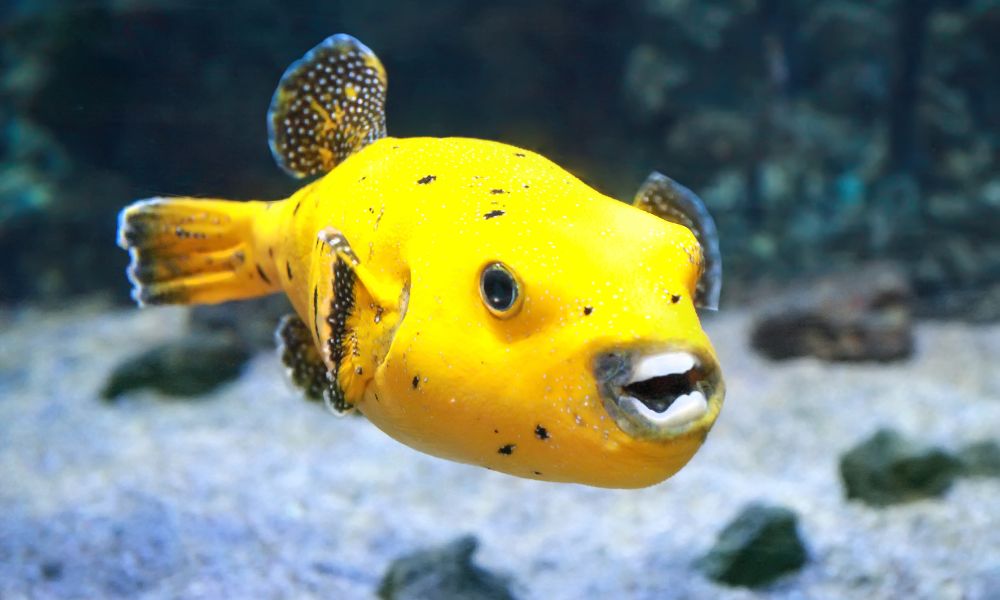
Challenges in Keeping Pea Puffers with Angelfish
Combining pea puffers and angelfish in the same aquarium presents several challenges. Understanding the implications of their size difference, behavioral traits, and dietary needs is crucial for any aquarist considering this mix.
Size Difference and Its Implications
- Predation Risk: The small size of pea puffers (1-1.5 inches) compared to the larger angelfish (up to 6 inches) can pose a risk. Angelfish might see pea puffers as prey, leading to stress or injury.
- Intimidation and Stress: Even if predation is not an issue, the size disparity can be intimidating for pea puffers, causing them stress and potentially impacting their health.
- Space Utilization: Larger angelfish require more swimming space and might dominate the tank, restricting the pea puffers’ ability to explore and feed comfortably.
Behavioral Differences and Potential Conflicts
- Territorial Nature: Pea puffers are known for their territorial behavior, which can lead to aggressive interactions with other fish, including angelfish.
- Angelfish Aggression: During breeding or in cramped conditions, angelfish can become quite aggressive. This behavior can pose a significant threat to the smaller, more vulnerable pea puffers.
- Stress Responses: Both species can exhibit stress behaviors when in an incompatible environment, such as hiding excessively, reduced feeding, or aggressive interactions.
Dietary Needs and Feeding Challenges
- Feeding Competition: Pea puffers and angelfish have different feeding styles and diets. The swift angelfish might outcompete pea puffers for food, leaving them malnourished.
- Diet Composition: Pea puffers require a diet rich in live or frozen food like snails, which helps in beak maintenance, while angelfish have a more varied diet that includes flakes, pellets, and live food.
- Feeding Management: Ensuring that each species receives the right amount and type of food can be challenging in a shared tank. It requires careful observation and management to prevent overfeeding or underfeeding.
In summary, the challenges of keeping pea puffers and angelfish together are significant. The size difference, behavioral incompatibilities, and distinct dietary needs make it difficult to create a harmonious living environment. This combination is generally not recommended, especially for inexperienced aquarists, due to the high risk of stress, aggression, and health issues in both species.






